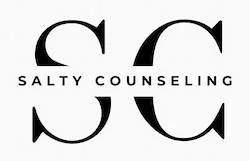What Are the Side Effects of EMDR Therapy?
Eye Movement Desensitization and Reprocessing (EMDR) is a powerful, evidence-based therapy that helps people heal from trauma, anxiety, and painful life experiences. At Salty Counseling, it’s one of the core methods I use to help high-achieving women and LGBTQ+ individuals move beyond coping and into true transformation.
But if you’re new to EMDR, it’s natural to wonder: Are there side effects? Will it feel overwhelming?
The short answer: EMDR does sometimes bring up intense emotions and physical sensations as your brain works to process unhealed memories. But with the right support and pacing, these effects are manageable—and often temporary.
This guide will help you understand the common side effects of EMDR, why they happen, and how I work with clients at Salty Counseling to make the process feel as safe and empowering as possible.
Why Do Side Effects Happen in EMDR?
EMDR helps your brain reprocess “stuck” trauma memories by using bilateral stimulation (such as eye movements, tapping, or sounds). This activates your nervous system and allows unprocessed experiences to be integrated into your larger life narrative.
Because trauma often lives in the body, this work can stir up emotions, physical sensations, or even vivid dreams as your system begins to release what it’s been holding. Think of it like untangling a knot: things may feel more noticeable as they loosen, but this is a natural and necessary part of healing.
Common Side Effects of EMDR
Emotional Sensitivity
You might feel more emotional than usual after a session. Memories, feelings, or even tears can come up unexpectedly.
This emotional “surfacing” is often temporary and shows your brain is still doing the work between sessions.
What helps: Journaling your feelings, practicing self-soothing techniques, and sharing any intense reactions with your therapist.
Physical Sensations
Your body may respond with sensations like:
Headaches or lightheadedness
Fatigue or feeling “drained”
Tension releasing as tingling or warmth
This is your nervous system recalibrating. It’s common, and it usually resolves within a day or two.
What helps: Hydration, rest, and gentle movement like stretching or walking.
Vivid Dreams or Flashbacks
EMDR can sometimes lead to more vivid dreams or even brief flashbacks. These aren’t signs of regression—they’re your brain continuing to process memories.
What helps: Keeping a dream journal and grounding yourself with present-moment techniques when needed.
Heightened Awareness of Triggers
As EMDR brings trauma into conscious awareness, you may temporarily notice triggers more acutely. This can feel uncomfortable, but it’s part of moving from avoidance to healing.
What helps: Working with your therapist to develop tools for managing triggers and staying grounded.
Feeling Unsettled Between Sessions
Some clients describe feeling “off,” foggy, or emotionally raw after EMDR. This is a sign your brain is still integrating.
What helps: Plan self-care after sessions and communicate with your therapist if distress feels too intense.
Are These Side Effects Dangerous?
In most cases, no. These side effects are temporary and a sign of active healing. They’re not dangerous, but they can feel uncomfortable if you don’t expect them.
This is why EMDR should only be done with a trained, trauma-informed therapist who can help pace the work and build stabilization skills before diving into deeper reprocessing.
How I Minimize Side Effects at Salty Counseling
At Salty Counseling, I take a trauma-informed and nervous-system-aware approach to EMDR. Healing doesn’t have to mean being overwhelmed.
Here’s how I help minimize side effects for my clients:
Building a Foundation of Safety First
Before beginning EMDR reprocessing, I help clients strengthen their capacity for grounding and self-regulation. Together, we practice skills that help you feel anchored and resilient—so if discomfort comes up later, you already know how to handle it.
This could include somatic exercises, breathing techniques, or Polyvagal-informed tools to calm your nervous system.
Going at Your Pace
Healing isn’t a race. I never push clients to process traumatic memories before they’re ready. Some sessions may focus entirely on resourcing and stabilization—building up your “window of tolerance” so you can engage with EMDR safely and effectively.
Tailoring the Process to Your Needs
Every person’s nervous system is unique. I adjust the pace, intensity, and even the type of bilateral stimulation (taps, tones, or eye movements) to fit your comfort level and capacity.
Ongoing Support Between Sessions
If you feel unsettled after a session, you don’t have to sit with it alone. I encourage clients to reach out between appointments if they need grounding reminders or additional support.
Tips for Supporting Yourself During EMDR
Here are a few ways you can help your body and mind adjust to EMDR:
Plan downtime after sessions to rest and reflect
Stay hydrated and nourished
Use grounding tools such as 5-4-3-2-1 sensory exercises or gentle movement
Communicate with your therapist about any intense reactions so they can help you adjust
When to Seek Extra Support
While mild side effects are normal, contact your therapist if you experience:
Overwhelming distress or panic
Suicidal thoughts or urges
Feeling dissociated or “numb” for long stretches
At Salty Counseling, I help clients navigate these challenges with care and adjust the EMDR process as needed to keep you feeling safe.
The Bottom Line: EMDR Side Effects Are Temporary
While EMDR can bring up emotions and sensations, these side effects are usually short-lived and are a sign that your brain is actively healing. With the right preparation, pacing, and support, most people find the discomfort manageable and worth the profound freedom and peace they gain.
Ready to Start Healing?
At Salty Counseling, I help high-achieving women and LGBTQ+ individuals heal from trauma, anxiety, and burnout through EMDR, somatic therapy, and nervous system healing. Together, we’ll work at a pace that feels safe and empowering for you.
Now accepting new clients in Salt Lake City and via secure telehealth.

